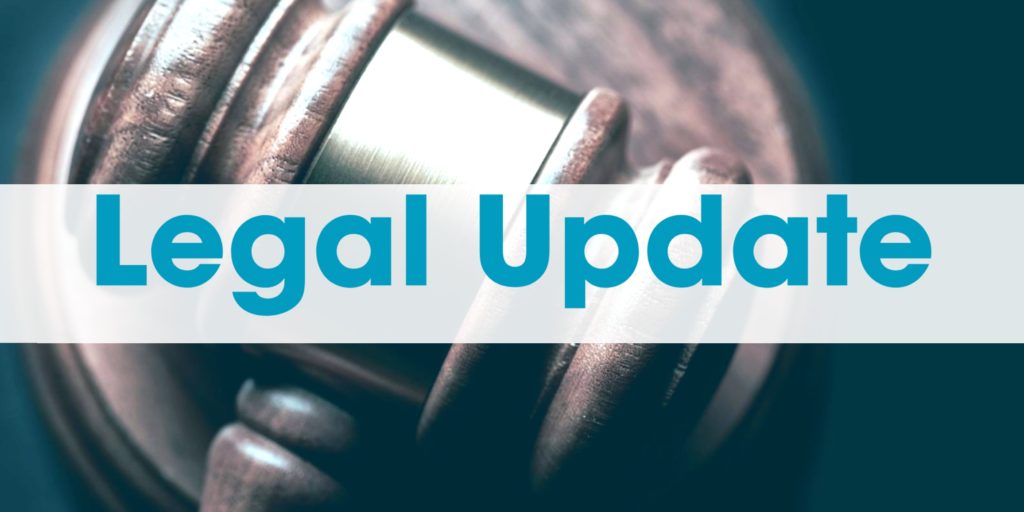 On March 24, 2020, the U.S. Department of Labor’s (DOL) Wage and Hour Division (WHD) issued guidance explaining the paid leave requirements under the federal Families First Coronavirus Response Act (FFCRA).
On March 24, 2020, the U.S. Department of Labor’s (DOL) Wage and Hour Division (WHD) issued guidance explaining the paid leave requirements under the federal Families First Coronavirus Response Act (FFCRA).
The FFCRA expanded the federal Family and Medical Leave Act (FMLA) to allow partially compensated employee leave for child care purposes related to COVID-19. The FFCRA also provided for employee paid sick leave for specific COVID-19-related reasons, including an employee’s own illness or quarantine. The Act included other measures to address the effect of the coronavirus pandemic on workers.
The DOL’s guidance explains the two paid leave provisions in the FFCRA. The guidance addresses issues such as:
- Which employers and employees are covered under the FFCRA;
- How much leave employers are required to grant employees and for what pay;
- Exemptions from the law;
- What tax credits are available to employers to pay for the leave; and
- Enforcement and penalties under the law.
The language of the FFCRA said it would take effect no later than April 2, 2020; however, the DOL guidance gives an effective date of April 1, 2020.
This Compliance Bulletin contains the DOL’s guidance document.
Action Steps
- Employers should review the DOL’s new guidance for insight on how the agency views compliance with the new law.
- Employers should continue to monitor guidance from the DOL on implementation of the new law.
 Highlights
Highlights
- The employee leave provisions of the law apply to private employers with fewer than 500 employees, and some public employers.
- Exemptions from certain provisions of the FFCRA may be available to employers with fewer than 50 employees.
Important Dates
March 18, 2020
The Families First Coronavirus Response Act is enacted.
April 1, 2020
The FFCRA takes effect, according to the DOL.
Dec. 31, 2020
FFCRA leave provisions sunset.
Overview
The FFCRA requires certain employers to provide their employees with expanded family and medical leave for specified reasons related to COVID-19. The WHD administers and enforces the new law’s paid leave requirements. According to the DOL, these provisions will apply from April 1, 2020, through Dec. 31, 2020. The language of the FFCRA, however, gives an effective date of no later than 15 days after the law’s passage, which would be April 2, 2020.
In general, the FFCRA requires covered employers to provide the following to all employees:
- Two weeks (up to 80 hours) of expanded family and medical leave at an employee’s regular rate of pay where the employee is unable to work because the employee is quarantined (pursuant to federal, state or local government order or advice of a health care provider) or experiencing COVID-19 symptoms and seeking a medical diagnosis; or
- Two weeks (up to 80 hours) of expanded family and medical leave at two-thirds an employee’s regular rate of pay where an employee is unable to work because of a bona fide need to care for an individual subject to quarantine (pursuant to federal, state or local government order or advice of a health care provider), or care for a child (under 18 years of age) whose school or child care provider is closed or unavailable for reasons related to COVID-19, or the employee is experiencing a substantially similar condition as specified by the Secretary of Health and Human Services, in consultation with the Secretaries of the Treasury and Labor.
In addition, a covered employer must provide the following to employees whom it has employed for at
least 30 days:
- Up to an additional 10 weeks of expanded family and medical leave at two-thirds the employee’s regular rate of pay where an employee is unable to work due to a bona fide need for leave to care for a child whose school or child care provider is closed or unavailable for reasons related to COVID-19.
Covered Employers
The expanded family and medical leave provisions of the FFCRA apply to certain public employers and to virtually all private employers with fewer than 500 employees. Small businesses with fewer than 50 employees may qualify for exemption from the requirement to provide leave due to school closings or child care unavailability if the leave requirements would jeopardize the viability of the business as a going concern.
Most employees of the federal government are not covered by the expanded family and medical leave provisions of the FFCRA. However, federal employees covered by Title II of the FMLA are covered by the FFCRA’s paid sick leave provision.
Qualifying Reasons for Leave
Under the FFCRA, an employee qualifies for expanded family and medical leave if the employee is unable to work (or unable to telework) due to a need for leave because the employee:
- Is subject to a federal, state or local quarantine or isolation order related to COVID-19;
- Has been advised by a health care provider to self-quarantine related to COVID-19;
- Is experiencing COVID-19 symptoms and is seeking a medical diagnosis;
- Is caring for an individual subject to an order described in (1) or self-quarantine as described in (2);
- Is caring for a child whose school or place of care is closed (or child care provider is unavailable) for reasons related to COVID-19; or
- Is experiencing any other substantially similar condition specified by the Secretary of Health and Human Services, in consultation with the Secretaries of Labor and Treasury.
Under the FFCRA, an employee qualifies for expanded family and medical leave if he or she is caring for a child whose school or place of care is closed (or child care provider is unavailable) for reasons related to COVID-19.
Duration of Leave
For reasons (1)-(4) and (6): A full-time employee is eligible for up to 80 hours of leave, and a part-time employee is eligible for the number of hours of leave that the employee works on average over a two-week period.
For reason (5): A full-time employee is eligible for up to 12 weeks of leave at 40 hours a week, and a part-time employee is eligible for leave for the number of hours that the employee is normally scheduled to work over that period.
Calculation of Pay
For leave reasons (1), (2), or (3): Employees taking leave shall be paid at either their regular rate or the applicable minimum wage, whichever is higher, up to $511 per day and $5,110 in the aggregate (over a two-week period).
For leave reasons (4) or (6): Employees taking leave shall be paid at two-thirds their regular rate or two-thirds the applicable minimum wage, whichever is higher, up to $200 per day and $2,000 in the aggregate (over a two-week period).
For leave reason (5): Employees taking leave shall be paid at two-thirds their regular rate or two-thirds the applicable minimum wage, whichever is higher, up to $200 per day and $12,000 in the aggregate (over a 12-week period—two weeks of paid sick leave followed by up to 10 weeks of paid expanded family and medical leave).
Tax Credits: Covered employers qualify for dollar-for-dollar reimbursement through tax credits for all qualifying wages paid under the FFCRA. Qualifying wages are those paid to an employee who takes leave under the Act for a qualifying reason, up to the appropriate per diem and aggregate payment caps. Applicable tax credits also extend to amounts paid or incurred to maintain health insurance coverage. For more information, please see the Department of the Treasury’s website.
Employer Notice: Each covered employer must post in a conspicuous place on its premises a notice of FFCRA requirements. A model notice was expected to be available on March 25, 2020.
Prohibitions: Employers may not discharge, discipline or otherwise discriminate against any employee who takes FFCRA leave and files a complaint or institutes a proceeding under or related to the FFCRA.
Penalties and Enforcement: Employers that violate the expanded family and medical leave or unlawful termination provisions of the FFCRA will be subject to the penalties and enforcement described in Sections 16 and 17 of the Fair Labor Standards Act. Employers that violate the provisions providing for up to an additional 10 weeks of expanded family and medical leave to care for a child whose school or place of care is closed (or child care provider is unavailable) are subject to the enforcement provisions of the FMLA. The DOL will observe a temporary period of non- enforcement for the first 30 days after the FFCRA takes effect for employers that act reasonably and in good faith to comply. For purposes of this non-enforcement position, “good faith” exists when violations are remedied and the employee is made whole as soon as practicable by the employer, the violations were not willful and the DOL receives a written commitment from the employer to comply with the Act in the future.
Source: U.S. Department of Labor
This Compliance Bulletin is not intended to be exhaustive nor should any discussion or opinions be construed as legal advice. Readers should contact legal counsel for legal advice. ©2020 Zywave, Inc. All rights reserved.

